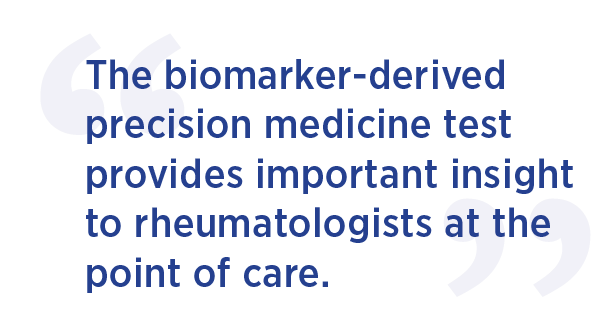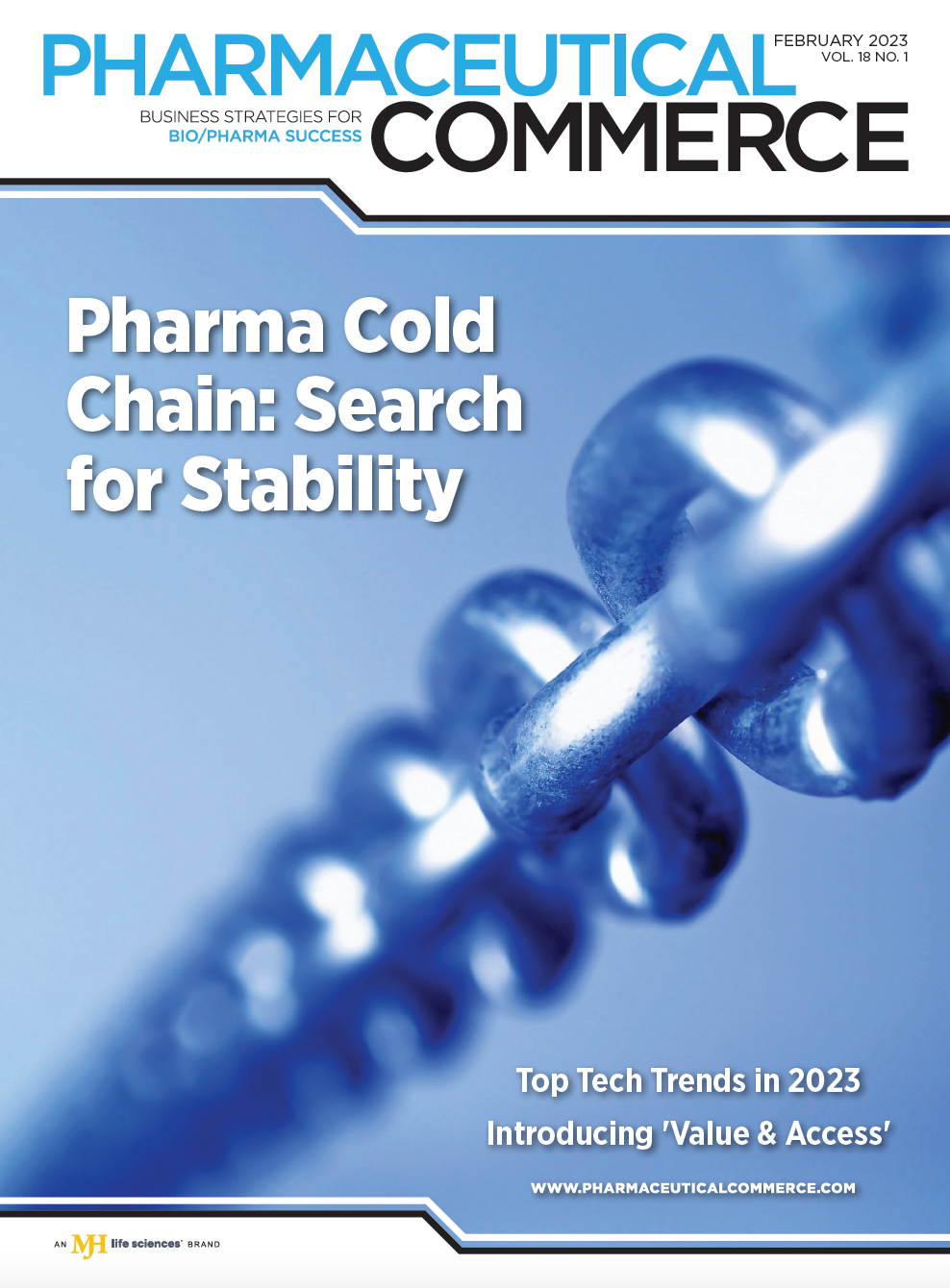Disruptive Factors Shape RA Landscape
As the range of treatment options for rheumatoid arthritis (RA) continues to grow and biosimilars are poised to enter the arena, the need for expert strategies to improve therapy selection and address the access, affordability, and adherence challenges patients face is coming into sharper focus.
Rheumatoid arthritis (RA) is a chronic, progressive, autoimmune disease. If not treated aggressively and effectively, it can lead to debilitating, irreversible joint damage and disability. RA patients are also at increased risk of cardiovascular disease, cancer, and death. Despite the availability of numerous approved therapeutic options, many patients do not respond well to these products.
Historically, patients have managed RA primarily with nonsteroidal anti-inflammatory drugs (NSAIDs) and steroids to address pain and inflammation. In recent decades, however, the field of rheumatology has expanded greatly to enable earlier intervention using biologic or targeted disease-modifying antirheumatic drugs (DMARDS) that interrupt underlying disease pathways. But these newer therapies also add complexity, ranging from their strict temperature-controlled handling and storage requirements to their administration (self-injected by patients), high costs, and potentially dangerous safety profiles. The DMARD therapeutic class is further divided as follows:
- Biologic DMARDs (bDMARDS). These are frequently monoclonal antibodies or receptor constructs that are administered by intravenous or subcutaneous injection. They target a specific molecule—either a cytokine, a cytokine receptor, or another cell membrane antigen—that mediates joint damage.
- Synthetic DMARDs (sDMARDS).These include two groups of drugs: conventional synthetic DMARDs (csDMARDs) and targeted synthetic DMARDs (tsDMARDS). The first tsDMARD agents—the janus kinase (JAK) inhibitors—are administered as small molecule agents in pill form, rather than self-injection, and prevent the phosphorylation of JAKs, a group of enzymes that enable inflammatory signals to be activated inside the cell.
RA pipeline: Developments to watch
Ewa Olech, MD, senior medical director and head of rheumatology center of excellence for IQVIA, notes that with the exception of biosimilars, there have not been any new FDA approvals of RA therapies since AbbVie’s JAK inhibitor Rinvoq (upadacitinib) was cleared in 2019.
“Currently, the biggest unmet need in RA is selecting and optimizing therapies while using drugs that are currently available,” says Olech. “Meanwhile, preclinical RA and susceptibility to RA are other areas of interest.” She adds that in the coming years, new treatments for this population will need to be different than existing RA drugs. “These new targets are expected to be more molecular targets that hone in on the early process of pathogenesis of RA,” explains Olech.

Today, there are more than 20 experimental therapies in Phase II and III development for RA, points out Akshay Mehta, a principal in the strategic advisory practice of Trinity Life Sciences. “Novel mechanisms of action that demonstrate high rates of clinical remission and robust safety data will catalyze the current RA market that is already saturated with biologic therapies,” says Mehta.
“There is particular interest to develop new oral treatments that act on pathways different from JAK inhibitors, and to explore potential combinations of a biologic with a drug for more refractory RA,” adds Anna La Noce, MD, PhD, executive medical director, medical management, for Syneos Health. “What could potentially be a breakthrough therapy is a drug acting on the function of regulatory T cells, which is impaired in many autoimmune diseases including RA. Restoring their function would lead to restoring self-tolerance and, therefore, reduce autoimmunity without causing immune suppression as current therapies do.”
Stem cell therapy using umbilical cord-derived mesenchymal stem cells (MSCs) is another method under investigation in the RA space.1 “Single IV infusions of MSC therapy could also be a game changer based on curative properties, and may demonstrate similar efficacy and decreased risk than biologics, thus improving patient outcomes,” says Mehta. The number of related clinical trials has been on the rise in recent years, according to ClinicalTrials.gov.
What role do biomarkers play in RA?
One source of constant frustration is that the typical treatment paradigm in RA involves a healthy dose of trial-and-error, with the patient moving from one therapy to another over time, until one provides the desired clinical response. Time lost on an ineffective drug can result in disease progression and irreversible joint damage over time.
“To date, there is no defined biomarker for diagnosis, treatment outcome, or prognosis in RA,” says Jian Wang, MD, executive medical director, medical management, for Syneos Health. “Rather, RA is a clinical disease, and treatment is based on shared decision-making between the patient and the rheumatologist, taking into consideration disease activity, safety issues, and other patient-reported outcomes, such as comorbidities and progression of structural damage.”
According to Robert Zutaut, RPh, clinical specialist with McKesson Provider Solutions, there are no biomarker tests available today used to define a specific treatment in RA—only to determine the presence of the disease.
“Moving forward, I believe there will be an increase in specific predictors (e.g., mRNA biomarkers, cytokine profiles) that will be originated by the rheumatologist to predict treatment response and/or target certain patient profiles or segments,” adds Mehta.
While no clear biomarkers have yet been identified to help rheumatologists match specific therapies with specific patients, a biomarker-based blood test was brought to market in August 2020 to help guide prescribing in RA. PrismRA from Scipher Medicine—a molecular signature response classifier (MSRC) that is ordered as a blood test by rheumatologists—yields clinically validated test results that predict if the patient will not have a desired clinical response to tumor necrosis factor-alpha inhibitors (TNFi), a widely-used class of RA medications that is often prescribed early. PrismRA evaluates the combination of clinical, serologic, and molecular features to accurately predict a patient’s likelihood of inadequate response to TNFi therapies in RA, according to the company.

“The biomarker-derived precision medicine test provides important insight to rheumatologists at the point of care, helping them reduce the reliance on trial-and-error prescribing in RA by avoiding TNFi therapies and instead prescribing a therapy with a different [mechanism of action] sooner,” says Krishna Patel, PharmD, associate director of medical affairs at Scipher Medicine. “This saves critical time, which helps to slow disease progression, improve clinical outcomes, improve quality of life for the patient, and reduces overall medical costs.”
In a parallel path, Olech of IQVIA notes that “the ability to identify at disease onset which patients who are likely to respond to csDMARDs remains another major unmet need, adding tremendous medical expenses to the healthcare system and negatively impacting patients’ lives.” She notes, however, that a new generation of machine learning algorithms has been shown to accurately identify these types of patients, offering promise to help “maximize the potential of csDMARDs and promote early biologic intervention where appropriate,” she adds.
RA biosimilars: Waiting for impact to be felt
Commercial immunology drugs represent a significant portion of global medicine sales (valued at $127 billion in 2021), and the prescription immunology market showed the highest historic growth rate of all large therapy areas, with a five-year compound annual growth rate (CAGR) of 16%, according to a May 2022 blog authored by IQVIA analyst Aaron Wright.2 RA is forecasted to remain the largest indication in immunology through 2026.
“The expected biosimilar pipeline is exciting, as the influx of treatment options will eventually commoditize the market,” says Mehta. “The autoimmune disease space is a top spend category, so pending biosimilar launches in 2023—especially biosimilars of Humira (adalimumab), which is the most prescribed branded biologic at most plans and will lose its patent exclusivity [this year]—will help create a downward pricing pressure on the originator product.”
To date, FDA and the European Medicines Agency (EMA) have approved multiple biosimilar versions of originator/reference biologics Humira (adalimumab), Enbrel (etanercept), Remicade (infliximab), and Rituxan (rituximab) for the treatment of RA. However, most of the launches in the US have been delayed due to patent litigation. According to La Noce, biosimilars for adalimumab should be launched this year, while etanercept biosimilars could be delayed until 2029.
Amgen is set to launch the first biosimilar for Humira in late January; the product will have a six-month exclusivity. “In July, we expect to have from six to eight other manufacturers enter the market," says Zutaut of McKesson. "It will be interesting to see how this will impact the practices and the patients from a cost perspective.”
To date, rheumatologists have been slow to adopt biosimilars, despite lower costs to patients. For example, Zutaut notes that infliximab biosimilar products have been in place since 2017, yet the branded version (Remicade) still holds a fair amount of market share. “Some of this has been due to competitive pricing on the part of the manufacturer, but a fair amount has also been due to the unwillingness on the part of either the provider or the patient to switch to the biosimilar,” he says.
Also, in an interesting twist, for most approved RA therapies, insured patients are able to get expensive biologics with very low cost to them out-of-pocket, says Olech. “However, regulatory policies for drug pricing negotiations against anticompetitive practices of exclusionary contracts could allow biosimilars to enter the market sooner and at lower costs, and this will markedly increase their use,” she adds.
Mehta believes the pricing dynamics established by biosimilar manufacturers so far have not been competitive enough to incentivize payers to switch their coverage from the originator products. “This story could change, given that multiple Humira biosimilars will be entering the market in 2023, and this could help patients reduce their out-of-pocket costs.”
The growth of hub service programs
The majority of the biologic drugs for RA are provided as auto-injectors or prefilled syringes, and, much like insulin, are generally required to be transported and stored at 2-8°C. “It is becoming ever more critical for patient services solutions to become more personalized in terms of interactive engagement models and customized educational, adherence, and emotional support,” says Mary Lynn Kelley, VP of patient support services for TGaS Advisors, a division of Trinity Life Sciences.
For example, as Brittany Ahmed, MD, medical director, medical and scientific management, Syneos Health, points out, many hub programs give patients access to "nurse ambassadors," who can help support these individuals in several ways, including, says Ahmed, in identifying ways to save money on the treatment, accelerate the learning curve when it comes to self-injection at home, establish a consistent administration schedule, and manage side effects.
At the same time, in recent years, there has been a shift from these types of high-touch services to more digital-driven support to help patients take more ownership of their healthcare journeys, says Josh Marsh, senior director of Cardinal Health Sonexus access and patient support. “This includes chat bots and other digital channels that give patients real-time access to insurance information and other affordability options, and tools to support adherence, such as educational videos or digital chat capabilities with a nurse,” explains Marsh.
In turn, hub programs today continue to shift a significant level of the responsibility onto the patient. “I believe that, overall, this trend is actually a good thing, as RA is a lifelong condition without a cure, and no one can care as much about your health as you can,” says Ahmed.
Maria Kirsch, general manager for patient services at EVERSANA, notes that many brand teams will use different vendors to manage and deliver disparate types of patient hub services, but argues collaborating with a single partner allows for more integrated program development, which could potentially result in better medication adherence and outcomes.
Some of the current challenges impacting patient support services, according to experts, include disparate data, high-cost vendor services, subpar service levels, and hiring strains (internal and external) as companies continue to recover from the COVID-19 pandemic. “Coupled with the rise in product complexity, drug manufacturers are forced to challenge themselves to think outside the box on the design of their patient support services strategies," says Kelley of TGaS Advisors, citing data architecture design and advanced analytics as particular areas where hub partners can help manufacturers keep pace.
“Data and true analytics insights are key to effectively administering a hub program," adds Marsh. "Whether the brand is using a single provider or multiple third-party partners to create their patient-support ecosystem, all data must be aggregated using common language and definitions to ensure the analytics that are output are meaningful to the brand team." He says it is important for partners to have the appropriate data warehouse, matching logic, and analytics capabilities to provide true insights back to the manufacturers.
“Embedding pharmacy expertise—as a resource for physicians—is equally important to support things like general clinical information, treatment pathways, infusion workflow, inventory control, and overall economic analysis of the entire pharmaceutical book of business,” adds Zutaut.
References
1. Wang, L.; Huang, S.; Shimei L.; et al., Efficacy and Safety of Umbilical Cord Mesenchymal Stem Cell Therapy for Rheumatoid Arthritis Patients: A Prospective Phase I/II Study. Drug Des Devel Ther, 2019; 13, 4331-4340; https://www.ncbi.nlm.nih.gov/pmc/articles/PMC6930836/
2. Wright, A. MIDAS Sales by Disease Insight Series #9. IQVIA Blog, May 10, 2022, https://www.iqvia.com/blogs/2022/05/midas-sales-by-disease-insight-series-9
